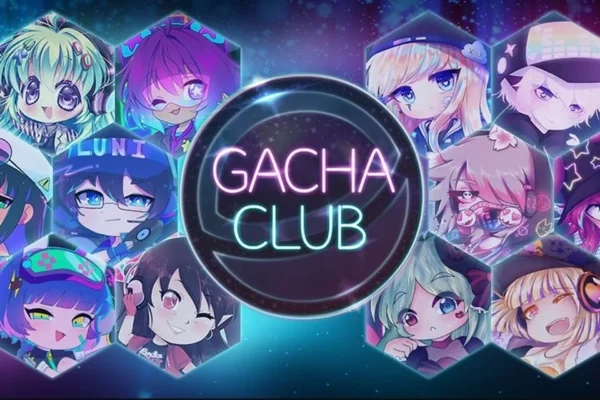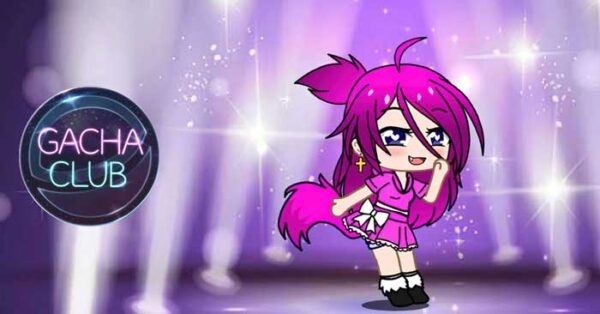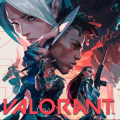Popular Now
Introduction
Gacha Club, developed by Lunime, is a wildly popular anime-style character creator and battle RPG that thrives on user-generated content. With thousands of customization options, players can design characters, create stories, and share their creations across social media platforms. But beneath the game’s cute aesthetic lies a major issue: the limitations and misuse of the character customization system. From restricted body types and outdated assets to the misuse of characters in inappropriate contexts, this problem has a profound effect on player creativity, the game's reputation, and the online Gacha community. This article explores that issue in depth.
1. The Power and Appeal of Customization in Gacha Club
Customization is the core of Gacha Club. Players can create and design up to 100 characters using a broad selection of hair styles, facial features, clothing items, weapons, pets, and backgrounds. It’s this freedom that draws millions into the game.
Many use it for storytelling—crafting visual novels, YouTube series, or TikTok skits using the in-game Studio Mode. This has helped Gacha Club become a creative outlet for a younger generation.
But with such creative freedom also comes boundaries—some self-imposed, and others enforced by the game’s limitations.

2. Where the Limitations Begin: A Static Asset Library
Despite offering a lot of variety, Gacha Club’s asset library is ultimately limited. The assets haven’t been significantly updated since the game’s release in 2020.
Players often find themselves using the same hairstyles, eye designs, and outfits. This leads to:
-
Repetitive designs across the community
-
A lack of diversity in visual style
-
Difficulty creating characters that represent different cultures, genders, and body types
Without new updates or expansion packs, the once-vast pool of assets starts to feel shallow over time.
3. Diversity Concerns: Missing Body Types and Representation
One of the most discussed customization limitations is the lack of body diversity. All characters follow a chibi template with minimal variation.
Players have noted:
-
No options for plus-size characters
-
No muscular builds or athletic proportions
-
No aging features like wrinkles or mature body types
This restricts character storytelling and creates a homogenized art style that makes it hard to represent real-world characters authentically.
Why this matters: For many young players, Gacha Club is a place to explore identity. Not being able to create characters who reflect themselves can be discouraging.
4. Workarounds and the Rise of “Editing” Culture
To push past these limitations, the Gacha community turned to third-party editing tools like Ibis Paint X or PicsArt. Players export their characters as screenshots, then manually edit them to change poses, body shapes, expressions, or clothing details.
This workaround leads to:
-
More personalized, diverse art
-
A subculture of Gacha “editors” and artists
-
Popular editing tutorials across YouTube and TikTok
However, this practice also creates a split in the community—between those who can edit and those who can’t, creating an invisible skill divide.

5. Inappropriate Customizations and Moderation Issues
As Gacha Club became more popular, especially on YouTube and TikTok, a darker trend emerged: players using customization tools to create suggestive or offensive characters.
Examples include:
-
NSFW content involving underage-looking characters
-
Offensive depictions of mental illness or trauma
-
Ship wars using inappropriate romantic scenes
Lunime has tried to implement restrictions, but since the assets are flexible and screenshots are shared externally, it’s hard to control what’s created.
6. The Problem of "Trend Pollution"
Many trends in the Gacha community revolve around character design—“OC Challenges,” “Glow Ups,” or “Fixing Ugly Gachas.” These sometimes send harmful messages.
For example:
-
Reinforcing the idea that "slim, fair-skinned, big-eyed" characters are more desirable
-
Labeling original characters with unconventional designs as "cringe"
-
Rewarding repetitive styles with algorithmic attention
This pushes creators to mimic trends instead of exploring unique designs, stifling creativity and personal expression.
7. How It Affects the Storytelling Potential
Limitations in character design also restrict storytelling. Without adult character models, elderly faces, or alternative body types, narratives become shallow or repetitive.
Creators often struggle to:
-
Differentiate villains and heroes visually
-
Show character growth (like aging or physical change)
-
Create realistic family dynamics or historical stories
This results in many stories feeling like variations of the same visual structure, regardless of the script or idea behind them.

8. The Lack of Official Updates and Community Frustration
One major frustration is that Lunime hasn’t updated Gacha Club with new customization assets since its release. The mobile game remains stagnant while the community continues to grow.
Players are asking for:
-
Skin tone gradients
-
Facial hair options
-
New fashion styles
-
Cultural attire (hijabs, traditional outfits, etc.)
The lack of response or roadmap for future content has created tension. Players feel like they’re being left behind despite continuing to fuel the game's popularity.
9. The Community’s Role in Pushing Boundaries
Despite all the issues, the Gacha Club community remains incredibly resourceful. Fans have created:
-
Custom pose packs
-
Outfit design guides
-
Template sheets for edited art
Platforms like TikTok, Discord, and YouTube are full of tutorials and fan-made content that expand what’s possible within Gacha Club—even without official updates.
This shows that while the tools may be limited, creativity thrives. But it also highlights how much potential is left untapped by the developers.
10. What Can Be Done: Solutions and Hopes for the Future
To truly empower its community, Gacha Club needs:
-
Regular asset updates or DLC packs
-
More inclusive customization tools
-
Better moderation tools to protect younger users
-
A “Gacha Creator Studio” for advanced users who want to build custom content
Many hope that the rumored Gacha Club 2 or an upcoming desktop edition will address these limitations. Until then, the community continues to adapt and grow—despite the constraints.
Conclusion
Gacha Club’s character customization system is both its greatest strength and most significant limitation. While it offers creative freedom, the lack of updates, diversity, and moderation tools limits what players can truly express. From struggling to represent body types to the rise of inappropriate content, the issue isn’t just cosmetic—it impacts how the community grows and how stories are told. Yet, the passion of Gacha creators continues to shine through, editing and innovating despite the odds. With developer attention and community feedback, Gacha Club could evolve into a truly inclusive and powerful creative platform.


















